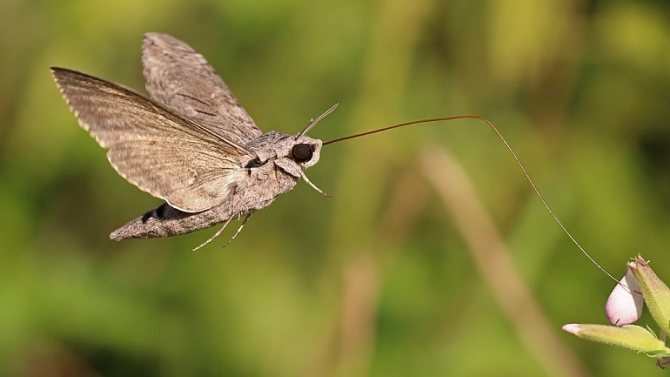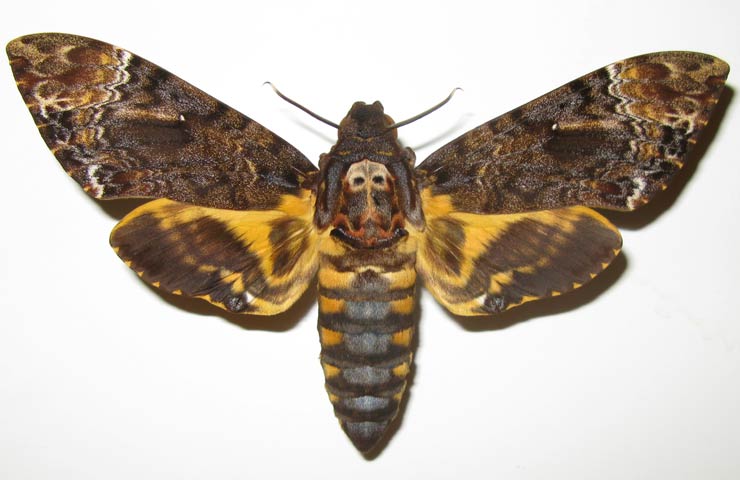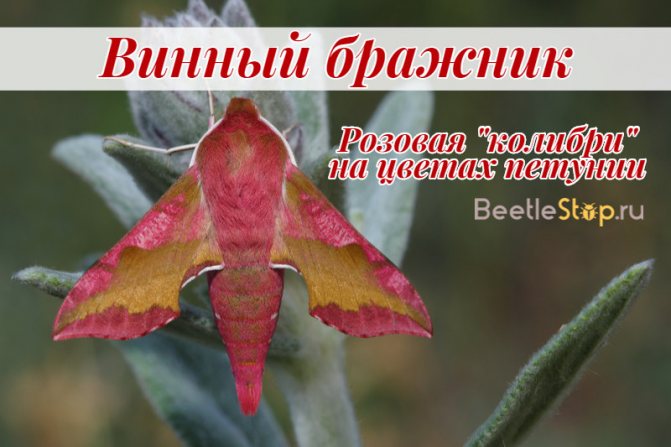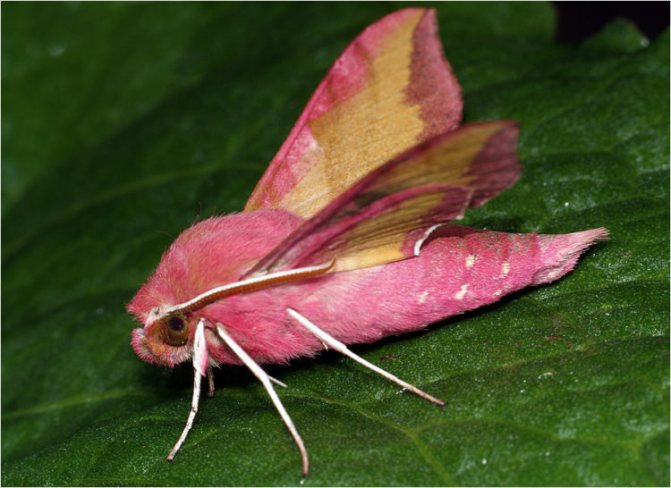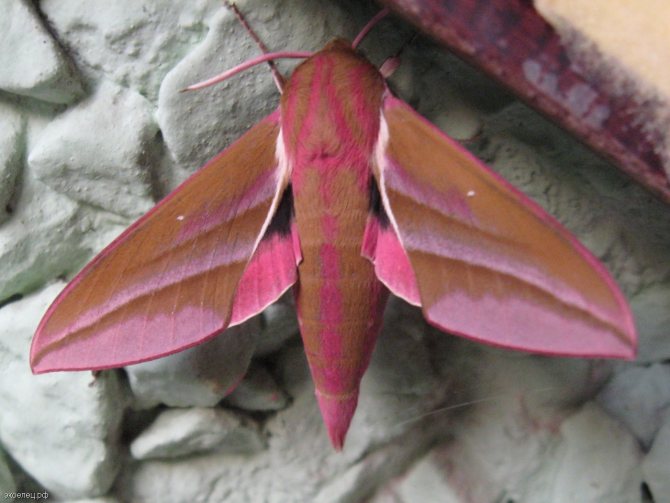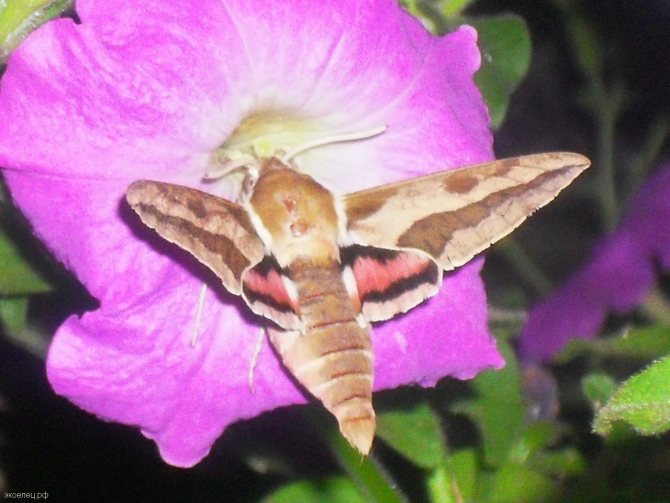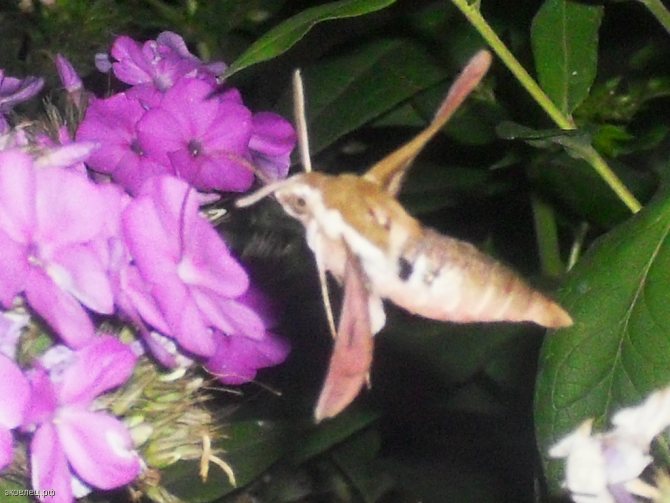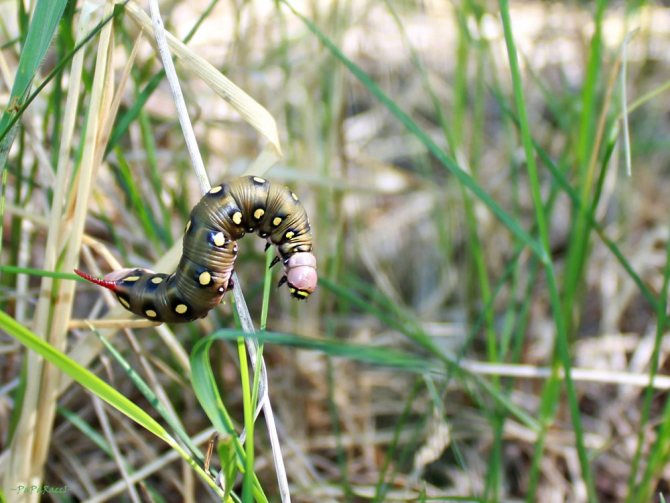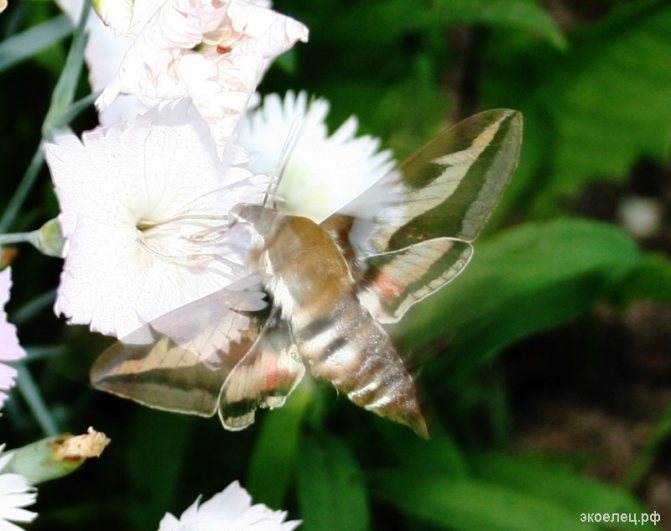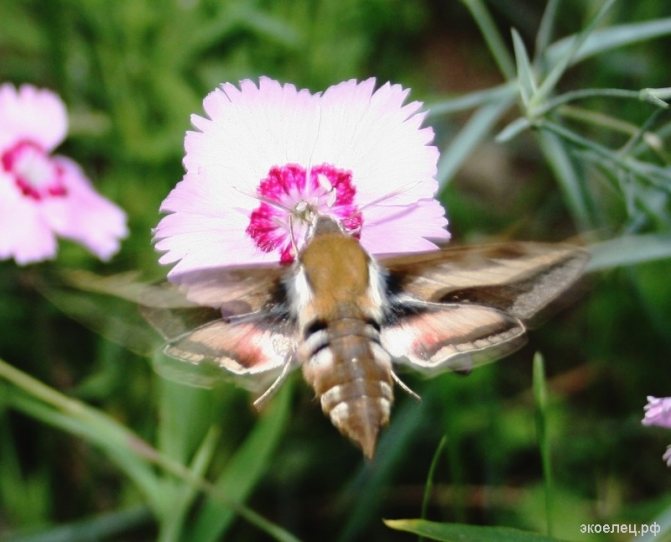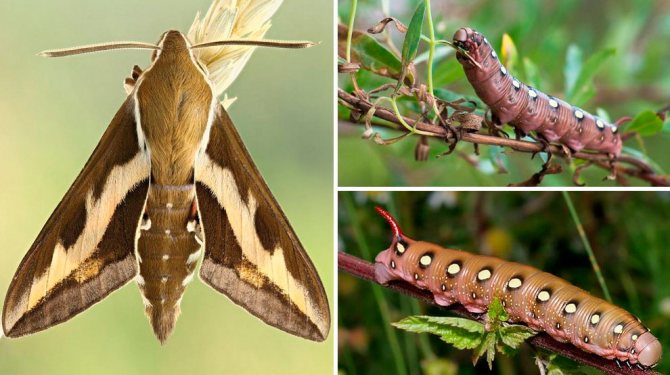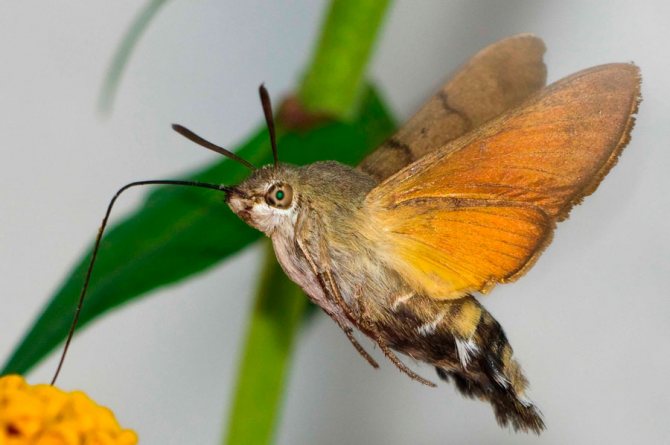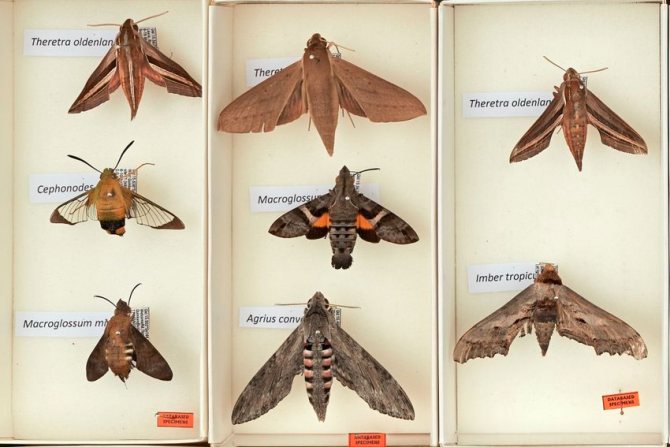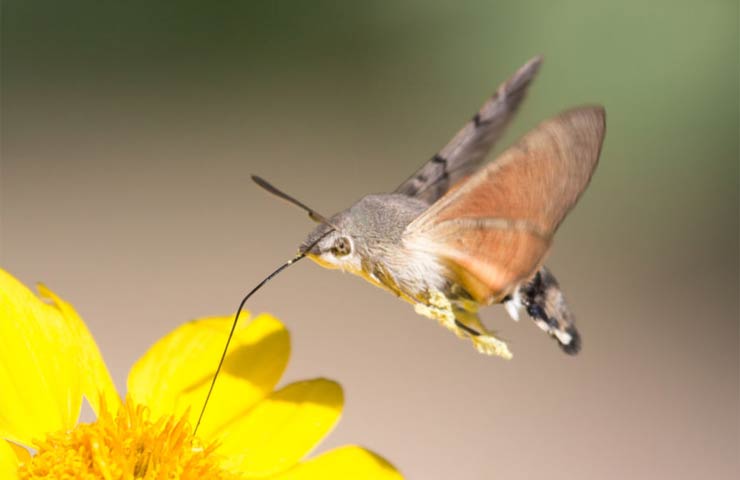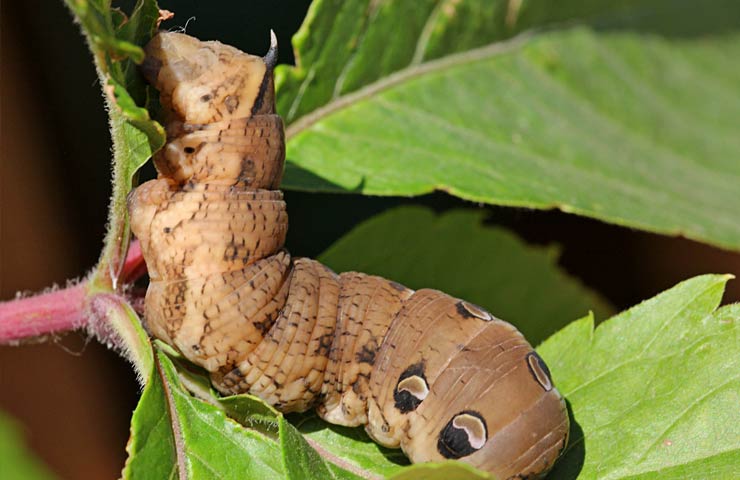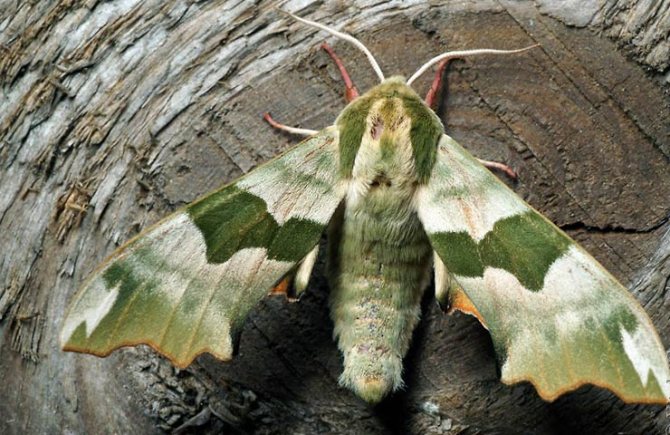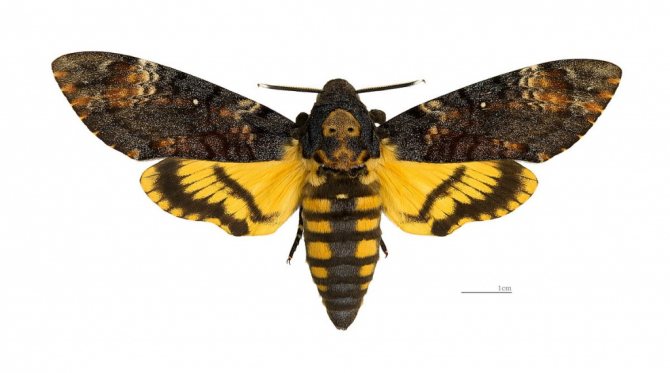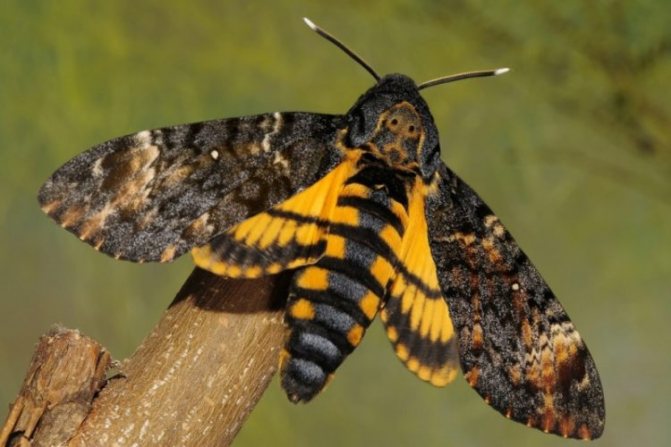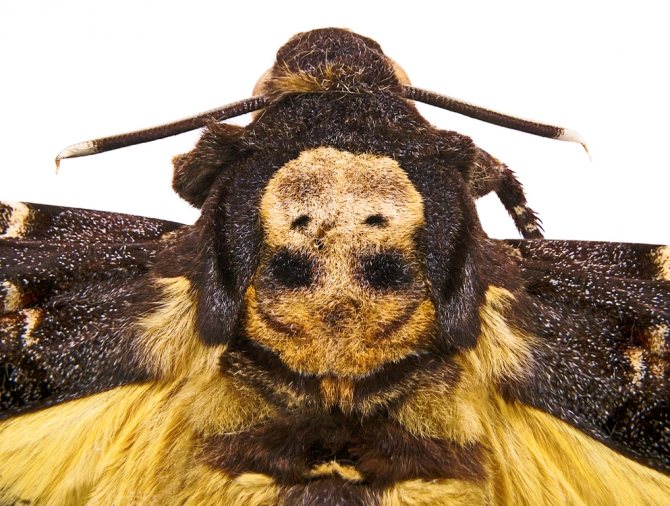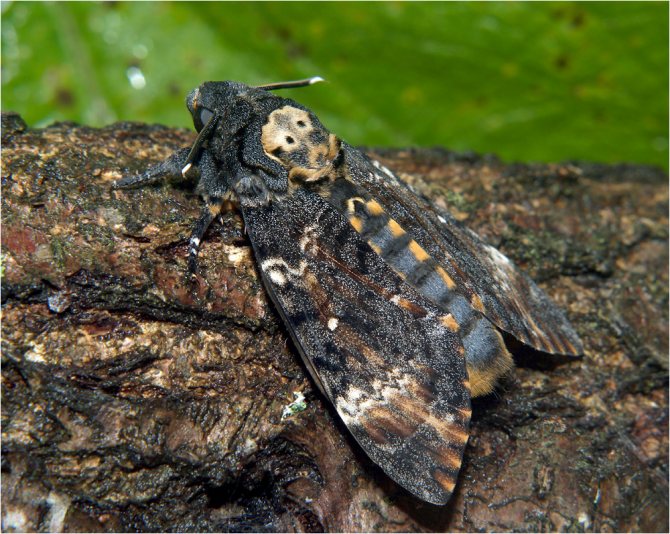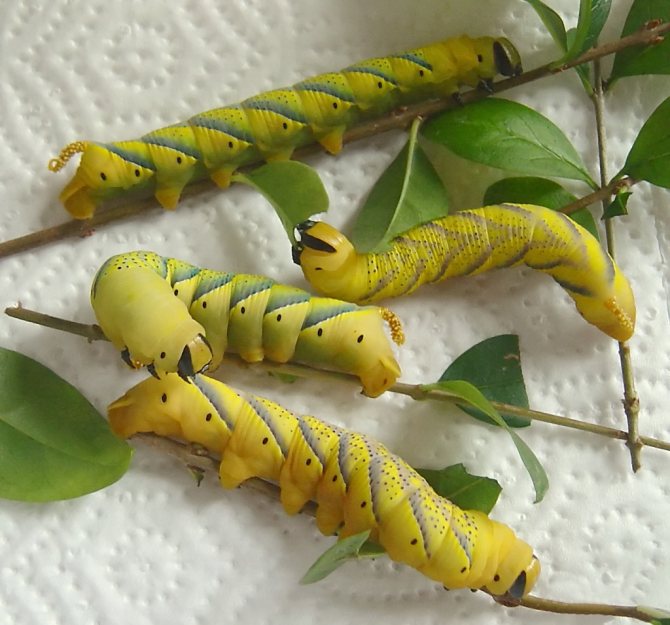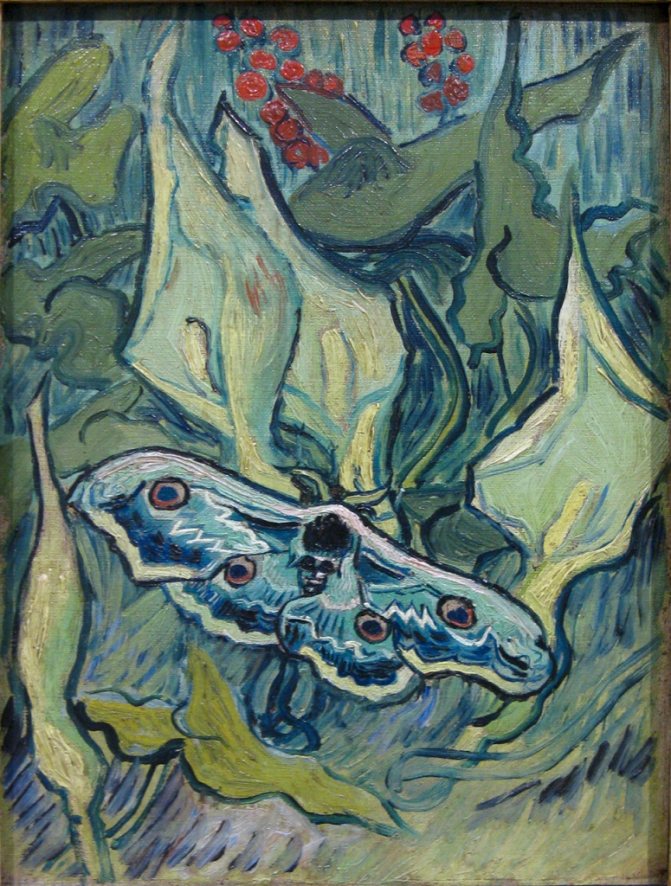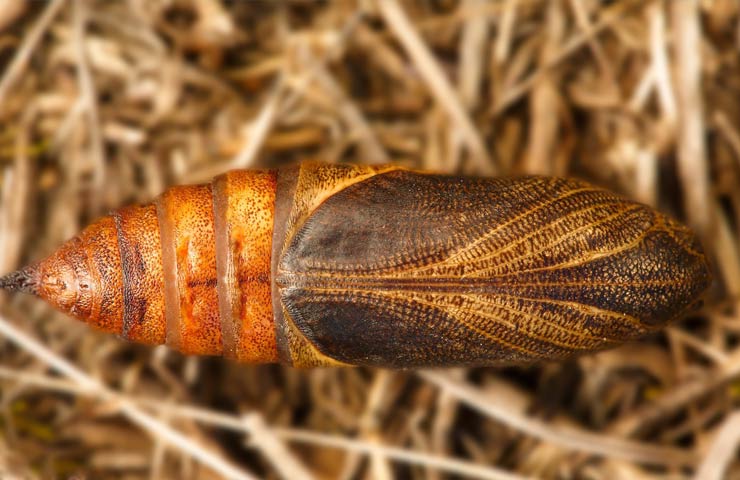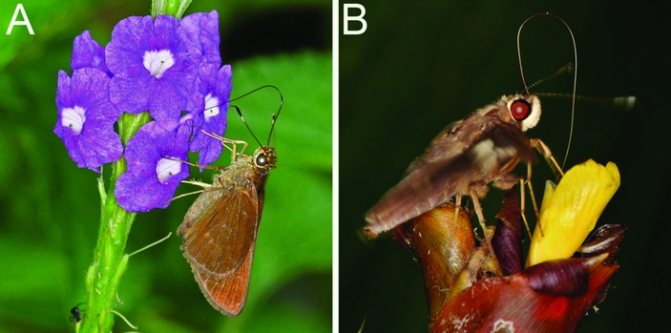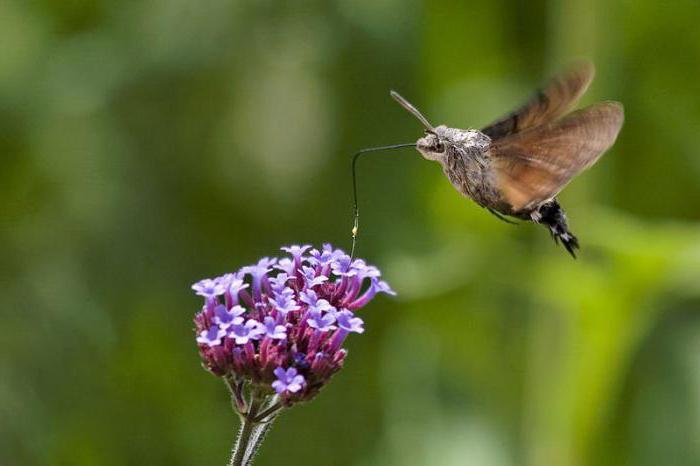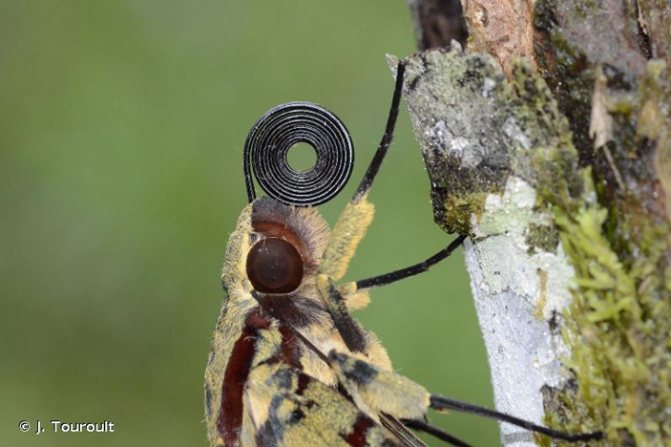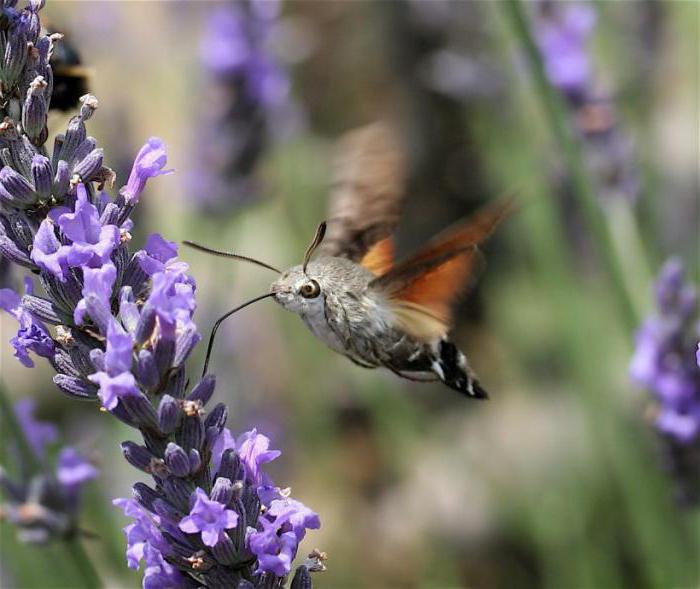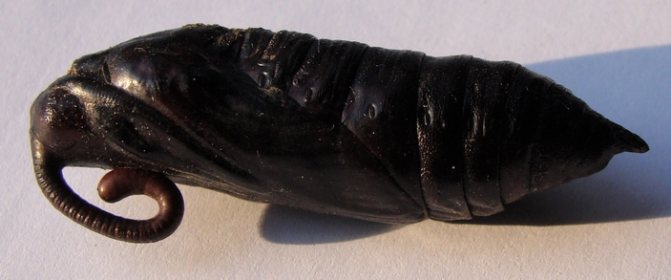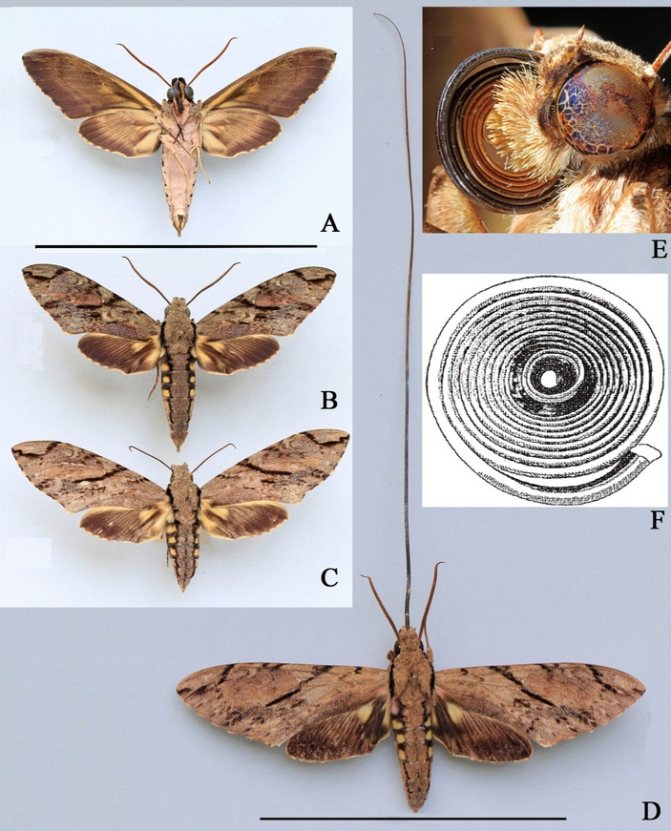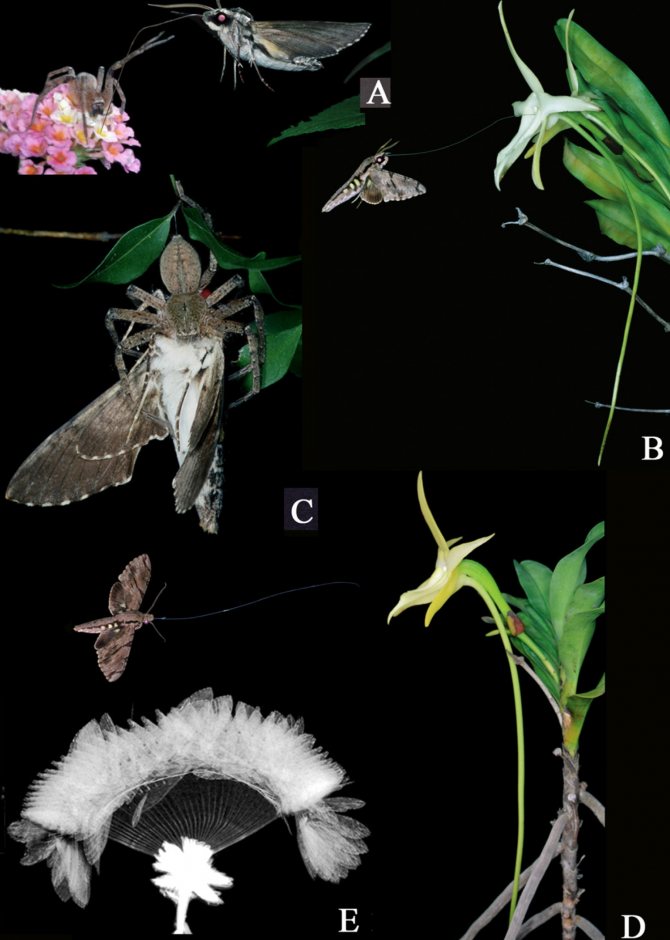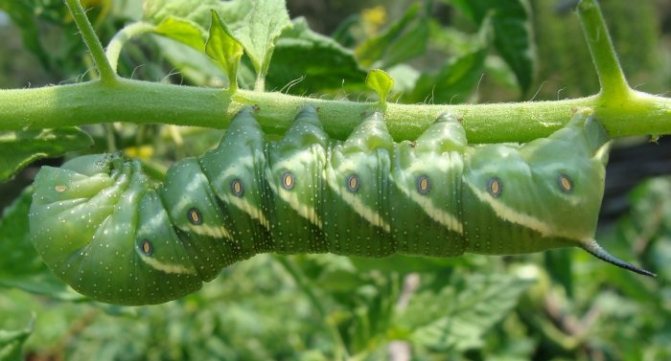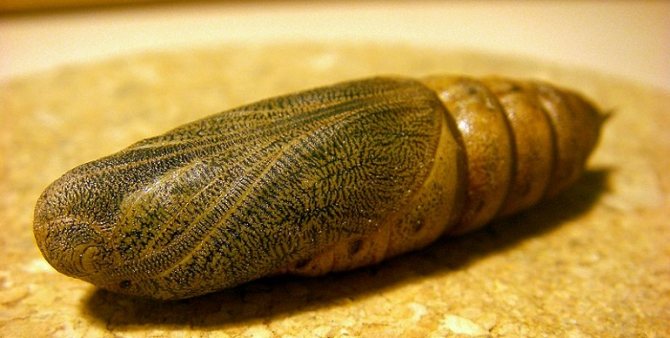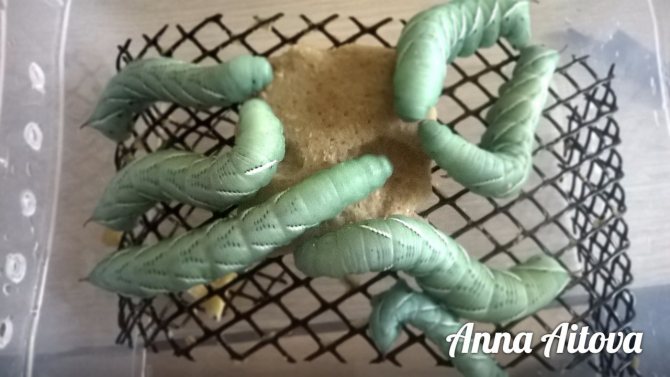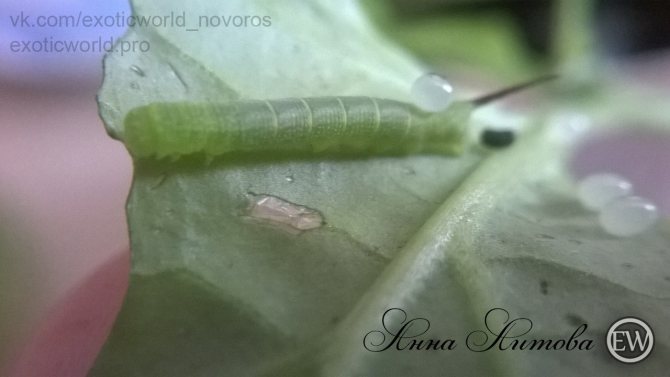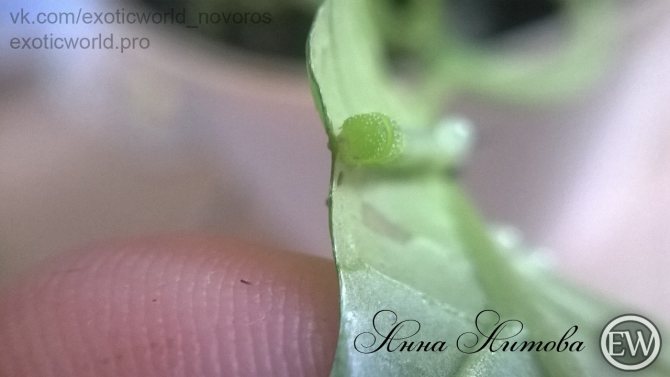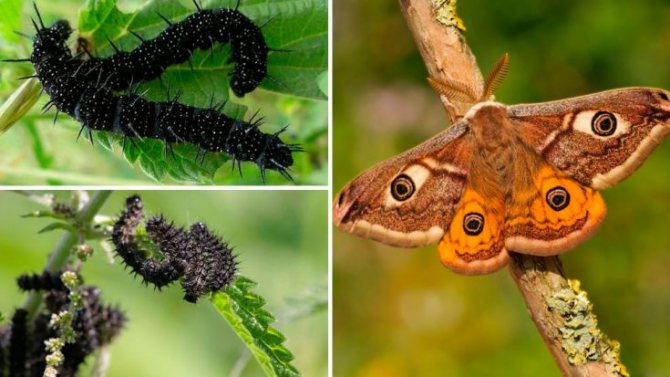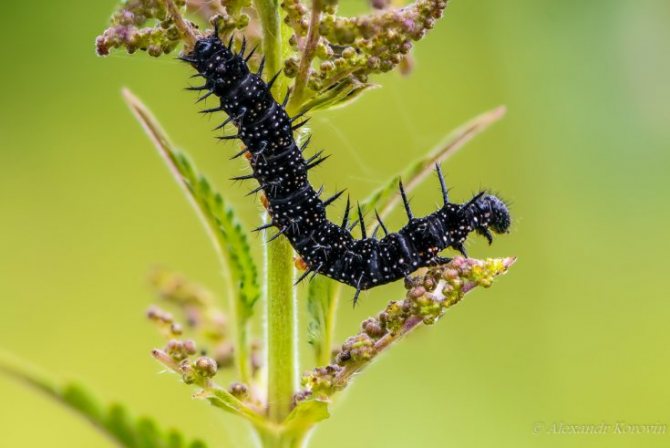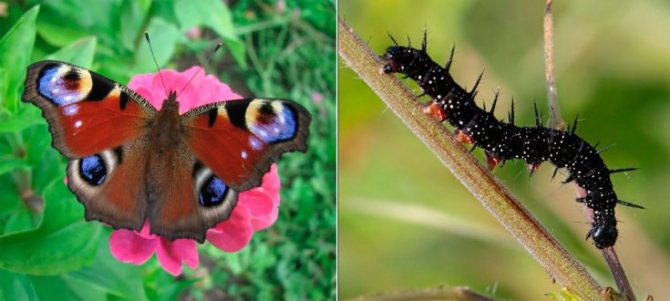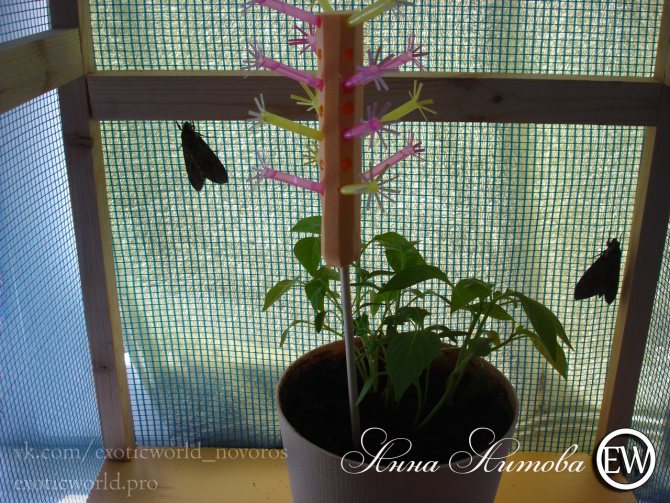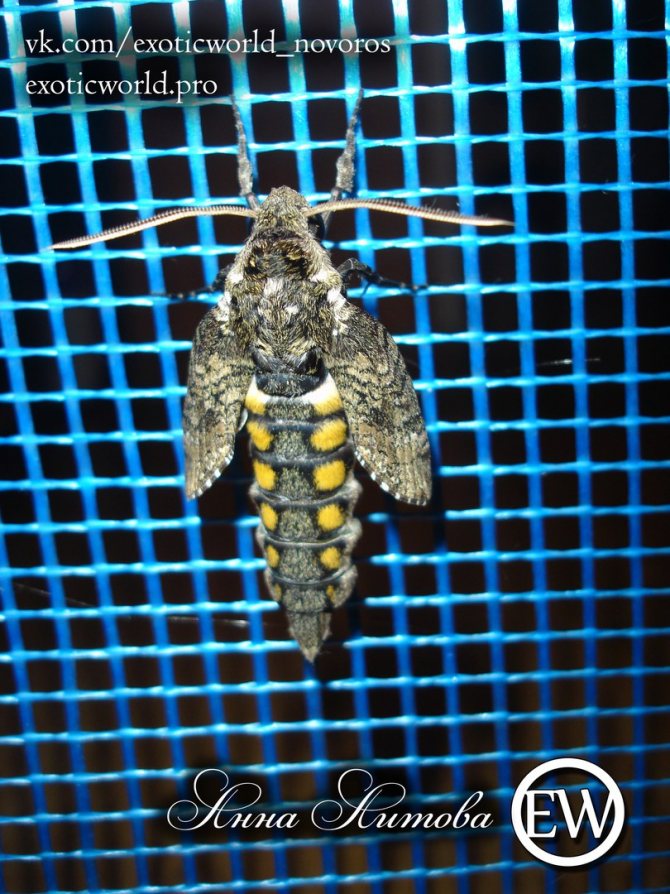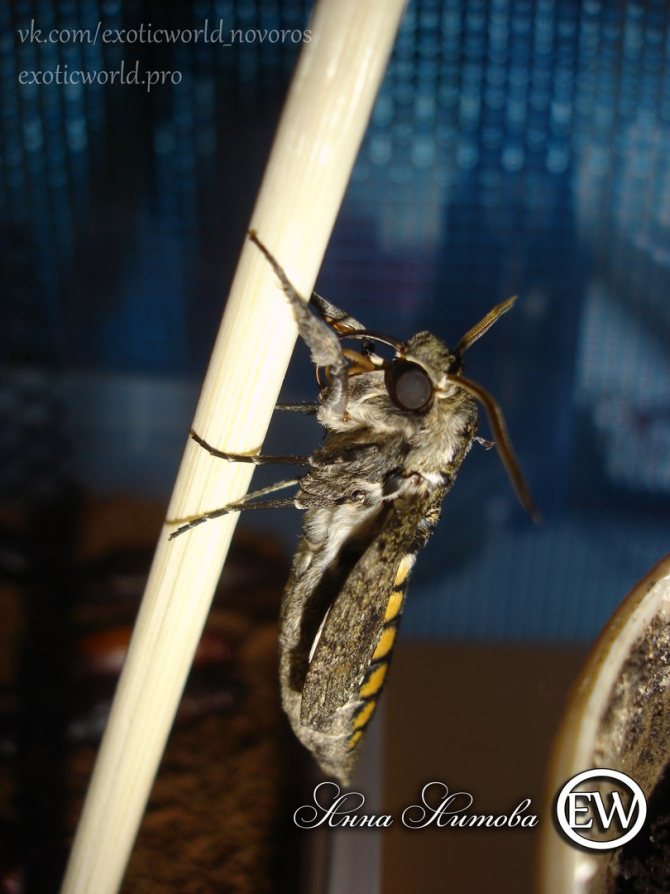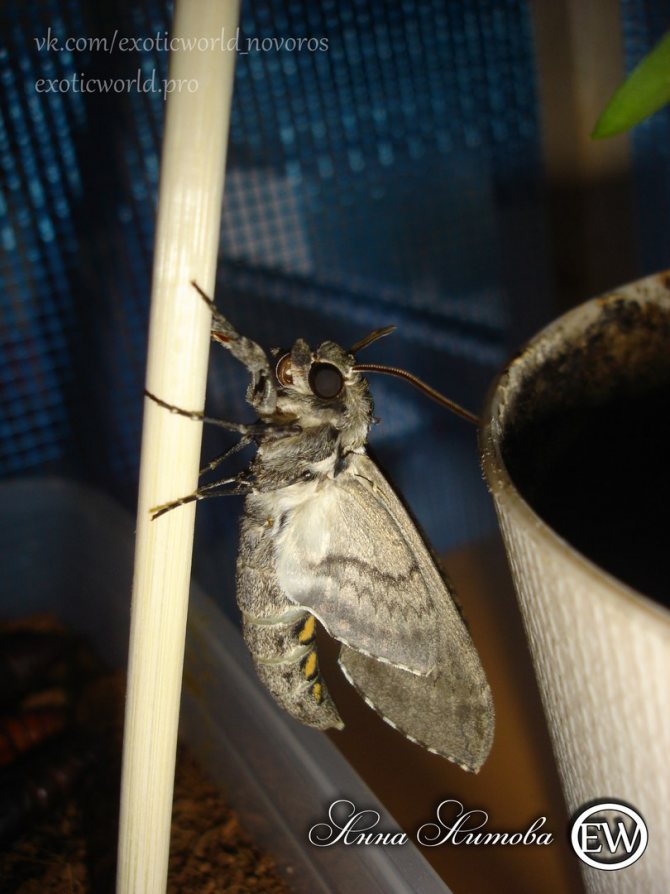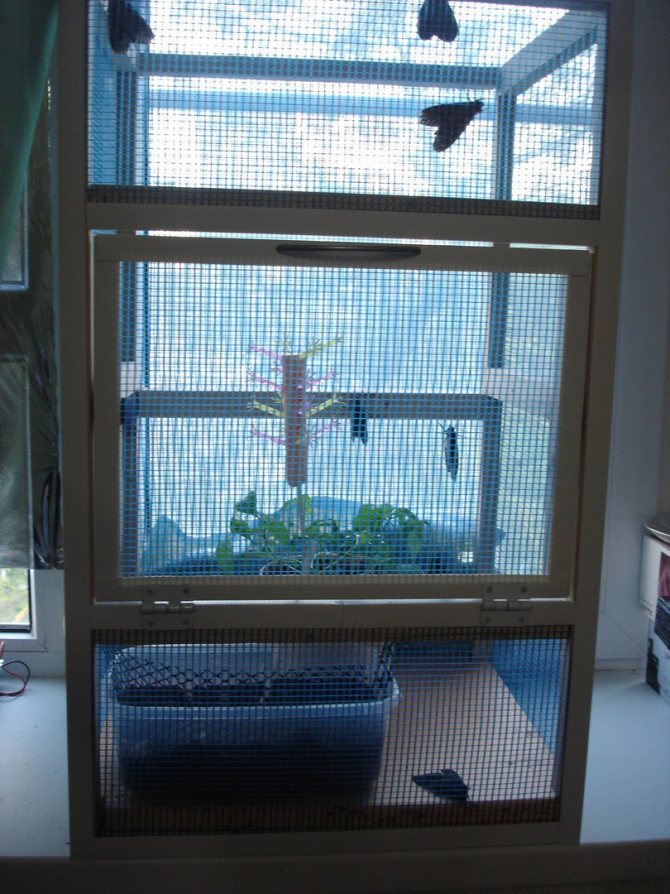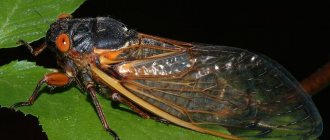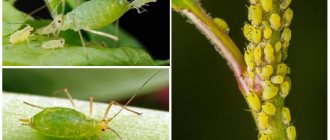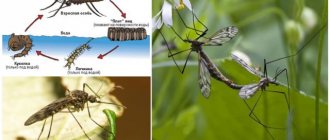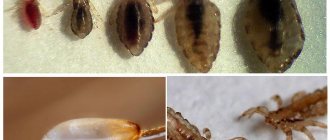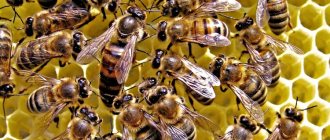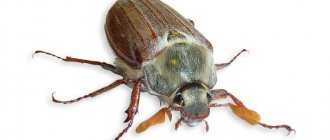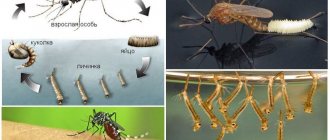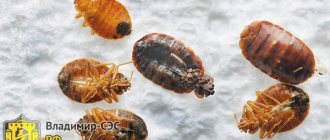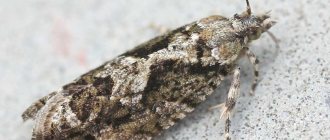If you consider carefully butterfly hawthorn, you can see in it a lot in common with the hummingbird. A large butterfly with a long, thick and fluffy body is really very much like a tiny bird.
Not all flowers are able to withstand its rather large weight. Therefore, the hawk moths do not sit on the flowers, but suck the nectar out of them with the help of a proboscis nose right on the fly. From the side it is interesting to observe how a large butterfly hovers over the bud and, with the increased work of its wings, extracts valuable flower nectar for itself.
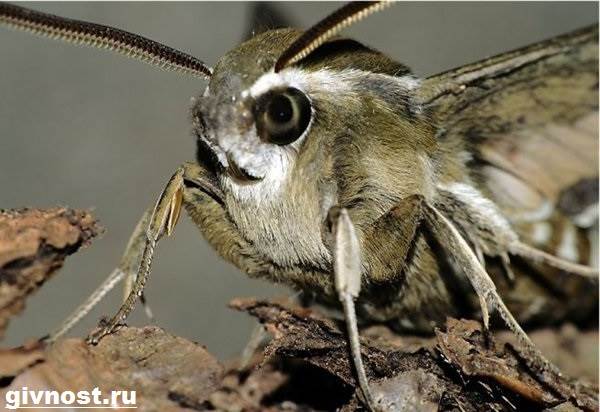
And this continues until it becomes heavier. People have noticed that after almost complete saturation, the butterfly flies from flower to flower, smoothly swinging at the same time, as if under alcoholic intoxication.
People who do not lead a completely sober lifestyle are sometimes called hawkers. So such a name stuck to the butterfly for its seemingly reckless behavior and smooth swaying during flight.
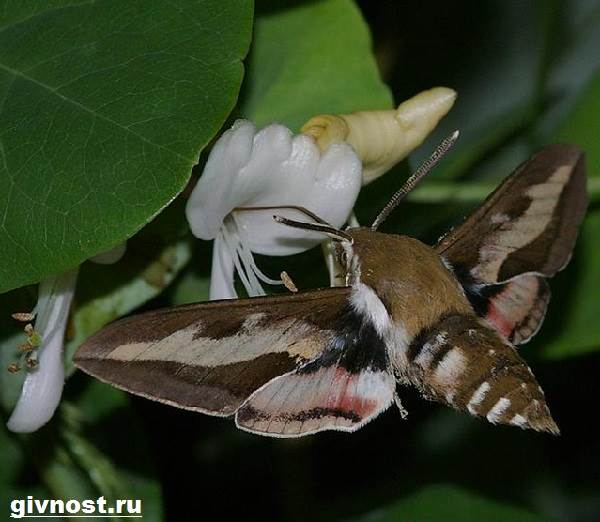

There is also an opinion why the people called them that way. The fact is that a butterfly drinks nectar with such delight, as if a person, a drinker, a mash. This name is ancient, therefore, the true reason why the butterfly was named Hawk Moth is probably simply not given. Most people are still inclined to the first version, which is really more like the truth.
Origin of the species and description
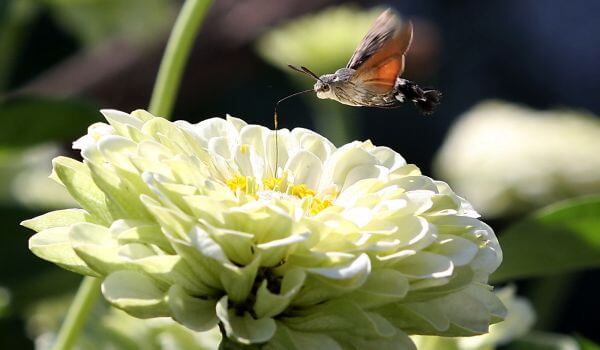

Photo: Moth butterfly
The hawk moth belongs to the arthropod insects, it is allocated to the order Lepidoptera, the family of hawk moths. The name of one of the most famous subspecies of the hawk moth subspecies is the dead head. This is due to the fact that an image resembling the shape of a skull is applied to the outer surface of the head. It is this butterfly that is the hero of many mythical legends and beliefs.
The study of the species and its description in the 20th century was carried out by the scientist Heinrich Prell. This type of insect has always aroused unprecedented interest. In ancient times, these butterflies were considered messengers of misfortune and signs of failure and disease. People believed that if a given insect suddenly penetrates into a human dwelling, then death will soon come here. There was also such a sign: if a particle of a wing gets into the eye, then soon the person will go blind and lose his sight.
Video: Butterfly hawk
In zoological atlases, the hawk moth is found under the name Acherontia atropos. Translated from Latin, the name of this butterfly symbolizes the name of one of the water sources of the kingdom of the dead. Initially, zoologists believed that butterflies appeared on the earth after the appearance of flowering plants. However, this theory was subsequently not confirmed. It is problematic to establish the exact period of the appearance of butterflies on earth. This is due to the fact that Lepidoptera have a fragile body.
Finds of the remains of the ancient ancestors of modern butterflies are very rare. They were mainly found in pieces of resin or amber. The oldest finds of the ancient ancestors of modern Lepidoptera date back to 140-180 million years ago. However, scientists say that the first primitive moth-like butterflies appeared on earth just over 280 million years ago. This type of butterfly is subdivided into a huge variety of subspecies, each of which has its own distinctive features.
Ways to defend against enemies
The moths of Russia, and all others, are created by nature in such a way as to have protection from ill-wishers.
A list of moth defense mechanisms is presented below.
Building Shelters: Different subspecies of moths build similar defenses for themselves. For example, sheaths and bagworms. The caterpillars of these moths, some time after they hatch, build houses around which pieces of foliage and various debris are fixed.
These shelters are arranged in a special way so that the larva protrudes from them just enough so that it can quickly hide inside in case of danger. The house grows with its owner, at least until the time when she grows up and becomes a pupa (this size is approximately equal to 4-5 cm). After the allotted time, butterflies come out, but only if we are talking about males. Females stay in these houses longer, until they are fertilized by a male and lay eggs.
The protective structures of the body, including the hairs and glands, are also the moths' defenses. Do moths bite with such a formidable weapon? The answer is obvious: only if necessary.
Many caterpillars have a row of bristles or hairs that can burn with poison hidden in the skin glands. During an attack, a dangerous mixture is sprayed from the point of the bristles, which irritates the skin of the enemy.
In addition, insects use the following remedies:
- glands in the larvae, with the help of which they cover their own body with a liquid that scares off approaching predators;
- some individuals begin to actively move when the enemy approaches, or pretend to be dead, or curl up in a tight ball;
- the larvae, at the moment of approaching danger, can fall from the branches on which they live, hanging on thin silk threads (the individual returns back along the same thread, slowly moving along it with the legs located on the chest and mouth appendages);
- hawk moths have dorsal growths that look like horns, which they direct towards the approaching danger;
- insects can defend themselves with spiny long hairs covering their body.
Pupae of moths, so helpless in appearance, also have defense mechanisms against a sudden enemy attack:
- pupae living in the soil are painted in tones that make them invisible;
- moths weave silk cocoons (in the silkworm, such shelters can have up to three layers - loose, dense and filmy), in which they hide from the attacks of predators.
Appearance and features
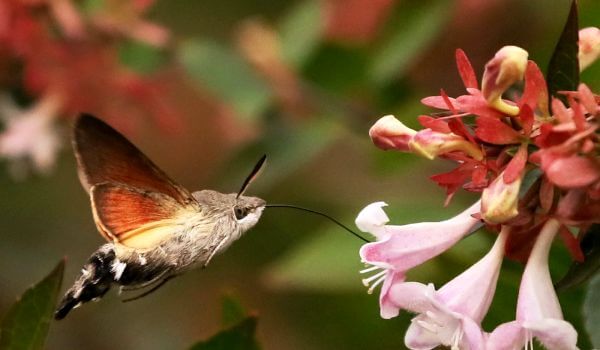

Photo: A hawk moth similar to a hummingbird
Hawk moths are considered to be relatively large insects and have characteristic features.
Signs of this type of Lepidoptera:
- massive body;
- long thin wings. Moreover, the anterior pair of wings is much longer than the posterior pair. At rest, most often the lower pair of wings is hidden under the lower one, or they are folded in the shape of a house;
- antennae without round beads at the end;
- the body has a characteristic ornament that resembles the bark of trees.
The wingspan of these butterflies is from 3 to 10 centimeters. The body length is 10-11 centimeters. In this species of Lepidoptera, sexual dimorphism is expressed. Females are somewhat larger than males. The mass of one adult female is 3-9 grams, for a male - 2-7 grams.
Size, body weight and color are largely determined by the subspecies. For example, the largest representative of this species is the antaeus. Its wingspan is 16-17 centimeters. The smallest is a dwarf hawk moth. Its wingspan does not exceed 2-3 mm. Wine hawk has a characteristic dark red hue. The color is also largely determined by the region of habitat and nutrition.
The butterfly has antennae that can be of various lengths, fusiform or rod-shaped. They are pointed and curved upwards.In males, they are much wider than in females. The mouth apparatus of the hawk moth is represented by an elongated, thin proboscis. Its length can be several times the size of the body, and reaches 15-17 centimeters. The longest proboscis has the Madagascar hawk moth, its length exceeds 30 centimeters. In some subspecies, it is short or underdeveloped. During the period when butterflies do not eat, it is simply rolled up into a tube.
On the lips of butterflies there are rather developed palps, which are bent upward and covered with scales. The insect has rather complex, large, round eyes. They are slightly covered with furry eyebrows. Special infrared locators are built into the organs of vision. With their help, insects not only distinguish colors, but are also able to capture infrared invisible rays. The body of the insect is covered with rather dense, thick fibers. At the end of the body, the villi are collected in a brush or pigtail. Insects have a fairly developed pectoral muscles, due to which they can develop a high flight speed.
What does it look like
Antennas are not very feathery, even in males. There are no eardrum organs, but members of the Choerocampini group have hearing organs on their heads. There is a frenulum and retina to connect to the hind wings. Chest, abdominal cavity, wings are densely covered with scales.
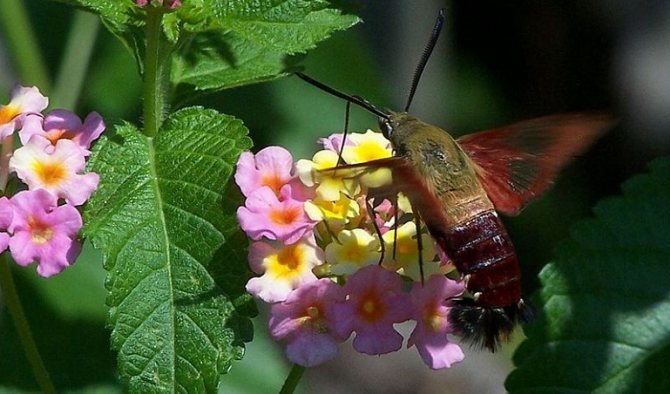

Some hawk moths have a rudimentary proboscis, but most have a very long one, used to feed on nectar from flowers. Most are crepuscular or nocturnal, but some species fly during the day.
Males and females live relatively long (10 - 30 days). Before the flight, they vibrate with flying muscles to warm them. When flying, the body temperature exceeds 40 °.
In some species, the differences in shape between the sexes are quite noticeable. For example, the African species Agrius convolvuli (bindweed) has thicker antennae, males have spotted markings, an undivided frenulum hook and retina.
Learn more about Scorpion bites: symptoms and treatment
Watch the video - bedstraw hawk moth
Where does the hawk moth live?
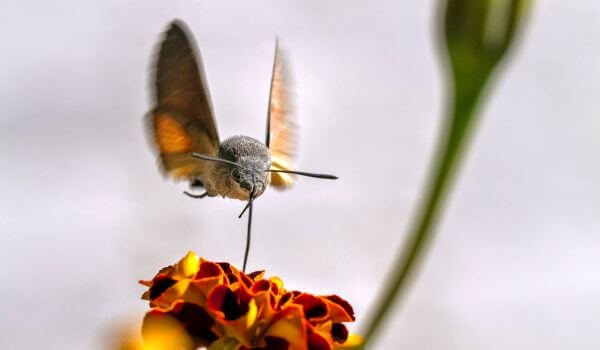

Photo: Moth butterfly in nature
This type of Lepidoptera is a thermophilic insect. Despite the large variety of subspecies, most of them are concentrated in tropical countries. Some subspecies can be found in the temperate zone of the earth.
Butterfly region:
- North America;
- South America;
- Africa;
- Australia;
- Russia;
- Eurasia.
No more than fifty subspecies live on the territory of Russia. Most species of butterflies choose areas with dense vegetation as their habitat. However, there are subspecies that inhabit the desert regions of Eurasia. Most species of moths are considered moths. Therefore, during the day, they are mainly found on the bark of trees, on bushes.
Hawk moths are cold-blooded insects, so before flying, they flap their wings for a long time and quickly, heating the body to the desired temperature. In the tropics, hawk moths fly all year round. In temperate latitudes, they endure winter in pupal stage. To survive in the coming cold weather, the pupa hides in soil or moss.
Some species migrate with the onset of cold weather to warmer countries. There are species that, on the contrary, migrate with the onset of summer to more northern regions. Migrations are associated not only with climate change, but also with overpopulation of the habitat. In new regions, they create temporary colonies and breed.
Now you know where the hawk moth lives, let's find out what it eats.
general information
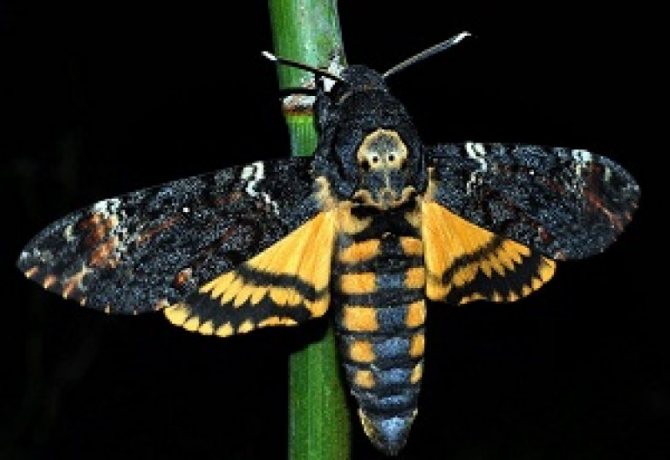

Hawk moths are amazing insects: outwardly, adults resemble hummingbirds. Some species of moth flies only during the day, others are active at night or in the morning. When an unusual creature with an original body color and wings appears in the garden or vegetable garden, many owners do not understand what kind of butterflies it is.
Characteristics:
- the size of adult insects is up to 110 mm, the proboscis is up to 100 mm long, the wingspan is from 65 to 120 mm;
- flight speed is impressive - up to 50 km / h;
- hummingbird butterflies hover over flowers, flutter, quickly flap their wings, feed on sweet nectar;
- the full cycle of transformation is characteristic of unusual creatures. First, an egg appears, then a larva (caterpillar), then a pupa, and finally, an adult (butterfly). The life cycle takes from 30 to 45 days; during the summer period, two generations of amazing creatures are often replaced;
- the emergence of adult insects begins at the end of June. Bright creatures look spectacular against the background of young greenery. Butterflies flutter around flowering trees and bushes: pears, apples, chestnuts, lilacs;
- caterpillars are large - up to 125 mm, most species have a bright color, an original pattern on the back and sides is often noticeable. Some species are painted in fantastic colors: green with a lemon tint, white with black and yellow spots on the sides, brownish gray with "painted" eyes in the front of the body. Growing individuals look like creatures from another planet;
- a characteristic feature of the caterpillars is the "horn" at the end. The color of the formation depends on the type of butterfly, for example, in the lilac hawk moth it is black on one side and yellow on the other, in the ocellated variety it is blue;
- before pupation, the color of the growing insect changes. During this period of development, the caterpillar accumulates enough nutrients, after which it burrows into the ground. After 18 days, a beautiful butterfly emerges from the pupa. While the wings are drying, the insect sits in place, as soon as it is possible to fly, the hummingbird butterfly goes to look for a sexual partner to maintain the population;
A few more facts:
- a caterpillar is a creature, soft to the touch, calm, crawling rather slowly. If you take it in hand, then unpleasant sensations or disgust do not appear. The growing individual sits quietly in the palm of the hand, moves slowly, willingly "poses" for the camera.
- caterpillars feed on young leaves. The wine hawk eats greens, settles on the vine. The larva is large, warlike, with a peculiar thorn at the end. The creature is so unusual that many owners do not destroy the pests, but watch them, hoping to endure an unpleasant period, later to see a beautiful hummingbird butterfly on the site;
- The tongue hawk moth resembles a small bird. When a beautiful creature appears at their summer cottage, many children say that they saw an unusual bird next to flowers;
- the hawk moth "death's head" got its name because of the characteristic pattern on the chest, similar to a skull, like the emblem on a pirate flag. The largest moth moth species feeds on sap of young trees and honey. The insect often climbs directly into the hive, makes sounds reminiscent of a young queen, steals honey without hindrance: the bees take it for a relative and do not touch it;
- the bedstraw species is most often found in the middle lane. Long proboscis, dense body, color - a combination of brown and beige, orange patches are noticeable on the tips of the wings.
Unusual insects are often called sphinxes. The reason is that the disturbed caterpillar lifts the front part, takes on a menacing look, freezes in the sphinx position. Hence the name.
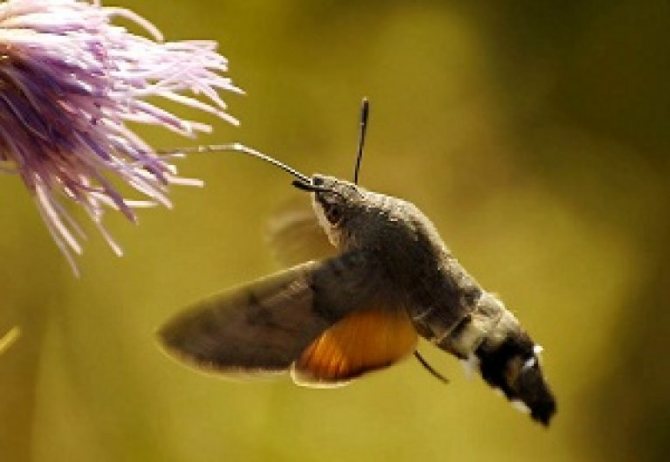

Types of hawk moths:
- euphorbia;
- wine;
- pine;
- hawk moth "dead head";
- ocellated;
- oleander;
- bindweed;
- lilac;
- proboscis hawk and others.
On a note!
The planet is home to about 1000 species of "northern hummingbirds". Some species make long-distance flights, migrate from one end of the country to the other, or cover the distance between continents.
What does the hawk moth eat?
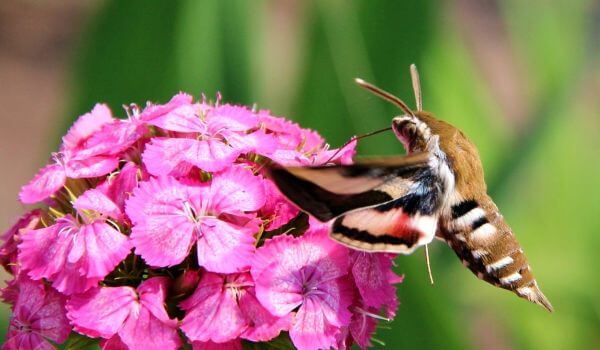

Photo: Moth butterfly
The main source of nutrition for adults is flower nectar, which is rich in carbohydrates. Due to the fact that the life span of a butterfly is very short-lived, it accumulates the main source of proteins during the period of being in the form of a caterpillar.Depending on the type and stage of development, Lepidoptera prefer to feed on the nectar of various plant species.
What can serve as a food source:
- poplar;
- sea buckthorn;
- lilac;
- raspberries;
- dope;
- belladonna;
- fruit trees - plum, cherry, apple;
- jasmine;
- tomatoes;
- coniferous nectar;
- grapes;
- spurge;
- oak.
Interesting fact: The larva of the tobacco hawk moth is considered poisonous, as it feeds on tobacco leaves and accumulates toxic substances in the plant. It has a specific coloration that scares away birds of prey, and can also butt spit, emit specific sounds.
There are also species of hawk moths that are able to feed on honey by climbing into the hives. Surprisingly, the insect manages to feast on sweets and remain completely safe and sound. They are capable of making sounds that resemble a bee buzz. The strong proboscis helps to pierce the combs with ease.
The hawk makers have a peculiar way of eating. They hover over the plant and suck in sweet nectar with the help of a long trunk. It is noteworthy that no other insect possesses this ability. With this method of feeding, insects do not pollinate the plants.
Eggs
So, we raised the purchased caterpillars, waited for pupation, butterflies hatched. Now the fun begins - the eggs).
Butterfly eggs begin to lay immediately on the very first night. But whether they will reproduce or not depends on whether the females ate, whether the males ate, and whether there was mating at all.
One female in her short life can postpone from 50 pieces, but I will not tell you the maximum number. I had 6 females and they dropped 3000 eggs and threw more, but I didn’t count. It turns out that one put off, roughly speaking, 500 pieces. I collected from 400 pieces per day. I put eggs in sauce bowls of 100 and signed the quantity and date. The kids began to peel off on the third day after the “harvest”, and not a single egg collected on the first day turned out to be fertilized. Like this.
Butterflies begin their flight every evening with dinner, and then begin to lay eggs. Because I had a feeder in the middle of a pot of pepper, they combined business with pleasure, ate and immediately "sculpted" eggs under the leaves of the plant. And not only. Both on the feeder and on the flexarium slats. In general, wherever their heart desires. It was easier for me to collect eggs from pepper leaves. In the afternoon, while the butterflies were resting, she took out the pot and calmly collected it, because the bulk was there.
Incubated eggs directly in small saucers at a temperature of 23-25C. Avoid direct sunlight and strong moisture. It will not be superfluous to make ventilation holes in the saucers. Babies go out 2-4 days after collection. I didn't put anything on the bottom of the saucers Remove from leaves and just lay on the bottom. The volume of the gravy boat is maximum 80ml, and less is possible.
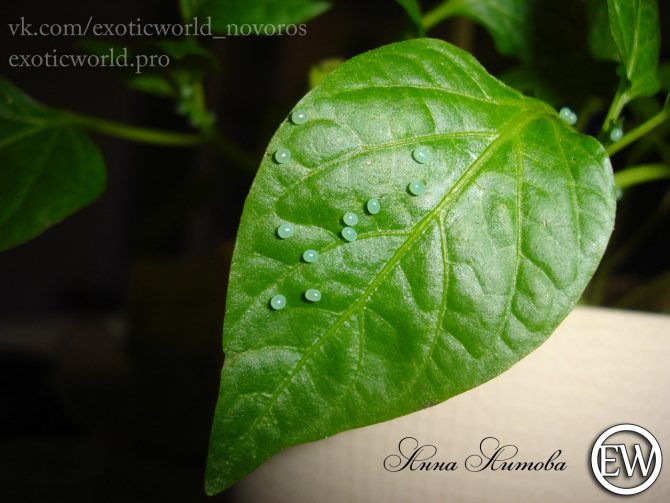

The color of the eggs varies from bright green to green-yellow. Round in shape, about 1 mm in diameter. Quite dense, picking up, can be damaged by strong pressure.
By the way, you can buy not only caterpillars, but eggs right away. It comes out cheaper, but! hatch percentage is a surprise. How was it harvested, when was it harvested, at what temperature was it incubated? If I'm not mistaken, they sell eggs in a quantity of 50 pieces or more. And, if you take into account the hatching rate (2-4 days), then the babies will start peeling right on the road, if you suddenly decide to order by mail or in some other way. And then the% loss will be even higher. The option to buy eggs is good for those who can pick them up right from the store.
Features of character and lifestyle
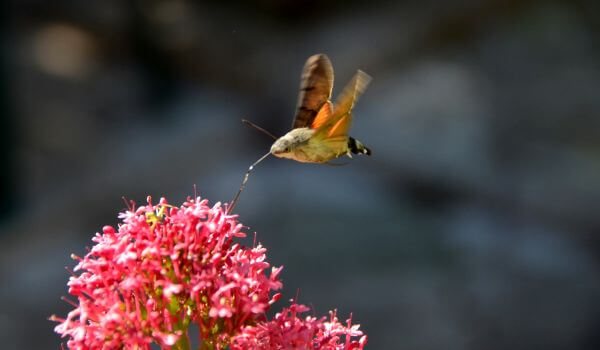

Photo: Moth butterfly in flight
In nature, there are a huge number of subspecies of hawk moth. Each of the subspecies is characterized by activity in a different period of the day. There are hawk moths who prefer to lead a nocturnal, daytime, or twilight lifestyle. These types of butterflies tend to develop a high flight speed. During the flight, they emit a characteristic sound, reminiscent of the drone of an aircraft.
Interesting fact: High speed of flight is provided by fast flaps of the wings. The butterfly makes more than 50 strokes per second!
Some butterflies resemble small birds in appearance. They are capable of covering vast distances, flying from one end of the country to the other, or even from continent to continent.
These types of butterflies are characterized by a specific manner of feeding. Due to the rather large weight, not every flower is able to withstand a butterfly. Because of this, they hover over the plant and suck out nectar with the help of a long proboscis. She flies from one plant to another until she is completely satisfied. After the butterfly satisfies its hunger, it flies, swaying slightly from side to side.
Some species of hawk moths, including the "dead head", at the moment of approaching danger, emit a characteristic sound resembling a loud squeak. They are able to make such sounds thanks to the air that is released from the front intestine, which contributes to the vibration of the folds of the mouth apparatus.
Growing purchased caterpillars before pupation
The butterfly itself is gray and inconspicuous, in the family of hawk moths (Sphingidae) there are brighter and more beautiful representatives. But we are not interested in the butterfly itself, but in its caterpillar. It is used as an additional food for insectivorous reptiles, hedgehogs, etc. If we look at the nutritional table, we will see:
WATER - 85% PROTEIN - 9% FAT - 3% ASH - 0% CALCIUM - 46.4 mg / 100g
✔ TRACK So, let's say you bought hawk moth caterpillars at the zoo. Usually they are sold in plastic cups with a mesh and with ready-made food, the amount of which is enough, as we are promised, to grow the caterpillars to the size we need. But not until the end ‼. That is, in order to feed the caterpillars until pupation, there will not be enough feed 100%. And then the question arises, how to feed the caterpillars? There are 3 options:
1 - Feed natural food (nightshade leaves) 2 - Try to invent a food recipe for artificial feeding 3 - Feed with purchased artificial food (the most correct option)
You have decided to feed the caterpillars on natural food. In nature, caterpillars feed on the leaves of plants of the nightshade family (usually tobacco, tomato, potato, pepper). To feed the caterpillars from a very young age, you need to stock up on a huge amount of foliage. I have not even tried this option, because the caterpillars eat so much that the plants do not have time to grow. I accidentally, while collecting eggs from the peppers, which I put in the flexarium with butterflies (more on this in the following parts), missed the egg. The caterpillar went out, lived on it and fed. Its color and size were different from those of the artificial brothers. She was beautiful green, while the artificial ones are more turquoise. Because one food was enough for her, she grew up on a par with the "artificial". You can grow purchased caterpillars on natural food to pupation. But me and many are tormented by one question, is it not harmful to the pet? Because Plants of the nightshade family are toxic.
Your food. I decided to reinvent the bicycle and make the recipe myself. Because there were grown-up caterpillars on my hands, I just needed to feed them to pupation. With grief, I found a recipe with a bunch of ingredients in English, translated it, cut it down on what I could, did it. Caterpillars ate mine well, let's call it “porridge”. They grew up and pupated successfully. Joy knew no bounds. BUT! When the little ones came out and I fed my "porridge", they grew sooooo slowly, there was a large percentage of deaths and I quickly ordered artificial ready-made food. Something was missing in my "porridge" for normal growth and functioning. No matter how much I experiment. Therefore, I consider this experience a failure.
Ready food. The best and most convenient option. Sold in the zoo in the same place as the caterpillars themselves. A bag of 100g costs around 150r. It is diluted 1: 4 with hot water and a pound of ready-made feed is obtained. It can be immediately poured into ready-made cups with a mesh and put to cool. Keep refrigerated.Or you can freeze it in a piece and cut into the desired quantity. Depends on where and how you keep the caterpillars.
I will gradually write about my experience with all the pros and cons, with all the mistakes in the following articles.
Here we talked a little about caterpillar nutrition. Purchased ones can be kept in the same glass in which you purchased, until the very moment of pupation.
Photo 1: example of a purchased cup with caterpillars Photo 2: feeding the caterpillars with my "porridge" Photo 3-4: caterpillar fed with natural food
Social structure and reproduction
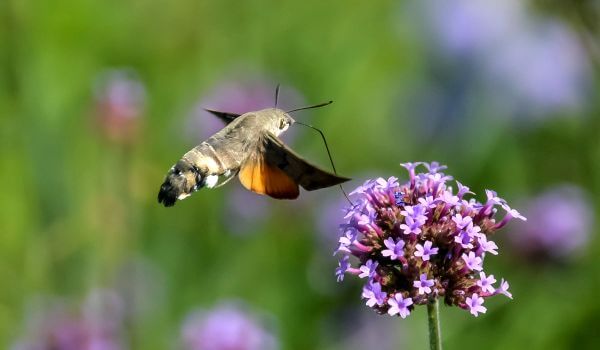

Photo: Moth butterfly from the Red Book
In their natural habitat, butterflies breed throughout the year. The offspring is hatched two, sometimes three times under favorable climatic conditions. Mating most often occurs at night. It lasts from 20-30 minutes to several hours. During this entire period, insects remain motionless.
One female can lay up to 150-170 eggs at a time. The egg is round, white with a blue or green tint. Eggs are laid most often on forage vegetation. Subsequently, after 2-4 days, a light, milky-white larva with colorless legs appears from the eggs.
The caterpillar has several stages of development:
- the caterpillar is light green, the diameter of the caterpillar does not exceed 12-13 millimeters;
- a large brown horn is formed on the body, the size of which visually exceeds the size of the body;
- the caterpillar increases significantly in size, new signs appear;
- the formed horn becomes lighter, rough. Stripes and dark spots appear on the segments of the trunk;
- the size of the body increases to 5-6 centimeters, the weight reaches 4-5 grams;
- the larva increases significantly in size. Weight reaches 20 grams, length - up to 15 centimeters.
Caterpillars are perfectly adapted to survive in various conditions. Depending on the species, they have a camouflage color that allows them to merge with vegetation. Caterpillars of some species have a streamlined shape, stiff bristles, or can exude an unpleasant odor, which frightens off birds and other representatives of the animal world that eat caterpillars.
After the caterpillar has accumulated enough nutrients and gains enough body weight, it sinks into the soil. There she pupates. At the pupal stage, the butterfly exists for 2.5-3 weeks. During this period, great changes take place in the body of insects. The caterpillar transforms into a butterfly. A beautiful butterfly frees itself from its cocoon, dries its wings, and goes in search of a mating partner in order to continue its life cycle.
What types of hawk moths are
There is a huge variety of moths in this group. It will be very convenient to consider the family of hawk moths in the table.
| View names | Description of the wings |
| Hawk moth | The upper ones are red in color with brown spots. There are bright blue "eyes" on the lower wings. |
| Hawk moth blind | On the lower tier, bright spots are painted, imitating the eyes of animals. |
| Small oleander hawk moth | It has green upper wings with a dark spot. The lower wings are bright orange with a pronounced border. |
| Brazhnik Tatarinova | The green upper wings are complemented by the lower red-gray ones. |
| Euphorbia hawk | Green upper winglets with a light stripe in the center and spots. The lower ones are black with a pink border. |
| Ademarius dariusky | The wings of the upper tier are discreet, helping to hide. The lower ones are pink with black edging. |
| Common hawk moth | Large wings are gray with stripes. Small bright orange. |
| Lilac hawk | The upper ones are brownish, and the lower ones are pinkish with distinct black transverse stripes. |
| Hawk maker anthea | This butterfly has yellow wings with transparent "windows". The body, or rather its sides, are also covered with yellow hairs. |
| Hawk Mugger | Large wings are green, small ones are yellow. |
| Aspen hawk | Both large and small wings are lilac in color. |
| Pine hawk | Large wings are gray, inconspicuous. Small ones of the same color. At the same time, there are stripes on the body that form a clear square. |
| Pink hawk | The body and wings of the insect are yellow-pink, but the antennae are purely white. |
Natural enemies of hawk moths
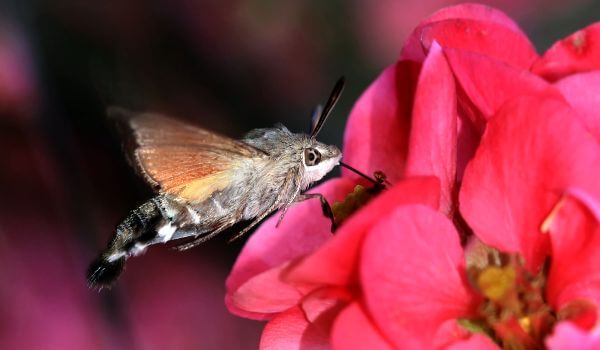

Photo: Moth hawk moth
The hawk moth has quite a few enemies in its natural habitat. At every stage of their development, they are constantly trapped by danger and a serious threat. The main enemies are parasites. These include wasps, wasps, and other types of parasites. They lay eggs on the surface of the body of butterflies, caterpillars or pupae. Subsequently, parasite larvae appear from the eggs, which feed on the internal organs of butterflies, causing their death. Only when fully formed, the larvae of the parasites leave the body of the butterflies.
Birds pose a danger to butterflies. For many species of birds, caterpillars, or even butterflies themselves, are the main food source. However, not all bird species are able to catch such a dexterous and fast insect. Not the last role in the extermination of the number of insects belongs to humans. As a result of its activities, it uses chemical insecticides, destroys the natural habitat of Lepidoptera.
Growing and keeping butterflies?
So, you have N number of pupae. Then we are waiting for the release of butterflies. Again, the “pupae” stage lasts 28 days (“+” “-” 2 days). During this time, you can start cooking for them “at home”.
To keep a group of butterflies (I had 13 of them), use any convenient container with a minimum size of 40x40x40. Let's look at a few options: 1. The most convenient is the flexarium. You can either buy it branded, beautiful and expensive, or make it yourself. Usually this is a frame covered with mesh. 2. A suitable sized terrarium. I think it is not very convenient, tk. There are many different liquids in factory terrariums and it will be difficult to collect eggs. And it will be necessary to cover the glass with a net so that the butterfly can sit on it. 3. Aquarium. In this case, a cover and ventilation are required, as well as a mesh, as in the option above. 4. Mesh cage. As an option, nets for children's toys, fishing tackle, etc. 5. Free range. Not a very good option. Because butterflies spray everything around with brown liquid. Eggs will have to be collected from all over the house, plus butterflies will fly at night and make noise like “helicopters”.
We decided on a house for butterflies.
Arrangement:
As I said above, if you have a glass container, you can cover it with a net so that the butterflies can sit on it. they are nocturnal and fly only at night, they spend the whole day at rest. It is also better to put some kind of plant, both artificial and live. I planted a bush of sweet pepper in advance and put it in the middle of the flexarium. Butterflies, both on it and throughout the container, will drop their eggs. It was convenient for me to collect eggs from a flower, because butterflies sit quietly during the day, just took out a pot and took eggs from all the leaves. I didn’t put anything on the bottom. The floor of my flexarium is made of expanded polystyrene. It was convenient to collect eggs that fell from him. And so, you can lay paper towels, newspaper or coconut substrate, but for me the latter is not convenient, because eggs may well get lost in it.
Food?:
For food, you need to make a non-tricky feeder. This is the most convenient and hassle-free option. You can put light caps, but all this is not convenient. I will describe my experience. We fill the finished feeder with food - this is syrup (10% solution of honey or sugar in water) and fix it in the “house”. I attached the feeder to a sushi stick and inserted it into a pot of pepper. It is necessary to fasten it so that the butterflies can fly freely and drink the syrup with a long proboscis.They usually start eating on the second day. My 13 butterflies consumed all the syrup in one night. Every morning she poured fresh. It is worth noting that if you make a syrup from non-natural honey, it quickly deteriorates and you have to make a new syrup every day. Very carefully, if there are ants at home, they will definitely come to feast on butterflies.
I did not do any additional lighting. Butterflies found food and ate well.
Life span:
With a daily diet, butterflies live quite a long time, about 2 weeks. females die faster for obvious reasons. I even had to release the last males, since the time was warm. and their noisy already meaningless "flights" were already useless, since the females did their job and departed to another world. And there is no sense from some females either, even if there was mating, then fertilized eggs will only be in one first clutch, then they will be empty.
On the second night, females begin to lay eggs. But in my case, it was these first eggs that turned out to be empty. Either the butterflies did not eat, or the males did not fertilize. I do not know. Further, throughout the entire life span, females lay eggs wherever they can - decor, net, feeder, etc. One female lays 50 eggs at a time. In my case, each female (and there were 6) deposited more than 500 pieces. What is the reason for such fertility of my females I do not know, maybe because of the daily nutrition. Collecting eggs is not difficult. They are pretty tight and come off well.
Photo 1: Feeder Photo 2-3: Butterfly just hatched Photo 4: Butterfly spread its wings Photo 5: Do-it-yourself flexarium
Population and status of the species
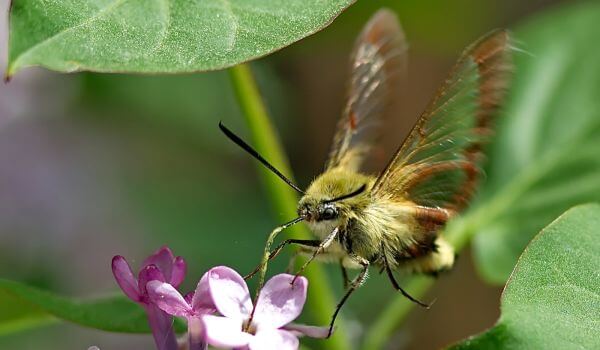

Photo: Moth butterfly
Despite the diversity of species, the hawk moth is listed in the Red Book, and many species of this butterfly are also found in the regional Red Data Books. To date, the total number of the insect is considered not threatened. It is even excluded from the Red Book of the Russian Federation. On the territory of Ukraine, the number remains threatening. In this connection, it was assigned the third category, and it is listed in the Red Book of the country.
Various factors contribute to the decline in the population of hawk moths in different regions:
- an increase in the number of birds;
- treatment of forage crops with chemical insecticides;
- cutting down shrubs and burning grass;
- human development of habitual regions of hawk moths' habitation.
A more favorable environment with the number of insects on the territory of the Caucasus. The climate is milder here, so much more pupae are able to survive the winter.
In other regions, there is a massive death of pupae and larvae due to the treatment of vegetation with chemical insecticides for baiting the Colorado potato beetle. A large number of birds, for which caterpillars are the main source of food, also contributes to the decline in the number.
What are the features of nutrition
You can determine what hawk moths eat by simply observing them. Traditionally, it is plant nectar. As a rule, insects have enough protein reserves accumulated in the larval stage.
Based on the species, hawk moths prefer certain plants, in connection with which they got their names.
Pine hawk moth prefers pine needles. Tobacco feeds on leaves, so it accumulates a large amount of nicotine, which makes the caterpillar poisonous. Bindweed feeds on bindweed pollen. The death's head acts differently: it steals honey from bees.
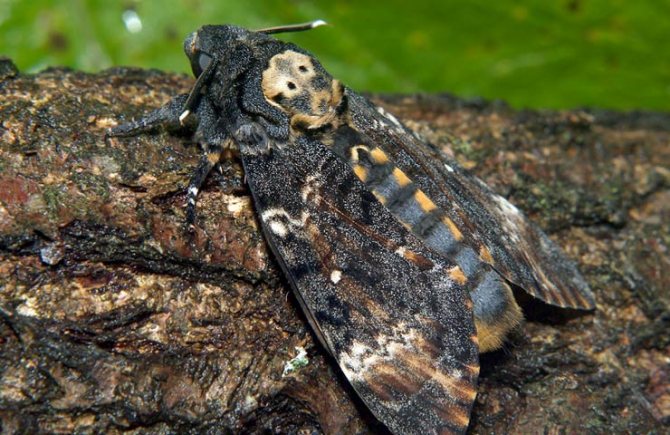

Hawk Moth Death's Head Eats Honey
And its secret is that a butterfly can make sounds like a queen bee. This hypnotizes the bees and allows the moth to indulge in honey.


